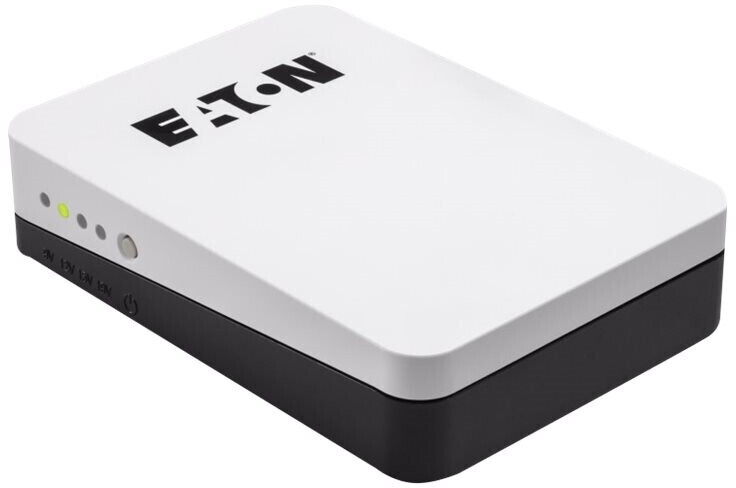Looking for a new opportunity as DevOps engineer
I am currently seeking a new opportunity as a DevOps Engineer, available from January 2026. I am open to remote or hybrid work from Prague, Czechia (Europe), for a long-term, full-time position or B2B contract. Please feel free to contact me for further details. You can also review my professional background on my LinkedIn profile.
5V UPS Solutions for Raspberry Pi in 2025: Beyond UPS HATs to Power Stations
As Raspberry Pi projects grow more complex and critical, reliable backup power solutions are essential. While UPS HATs have been popular for seamless power backup, their limited capacity often falls short for demanding or long-duration setups. In 2025, new trends favor compact power stations, 12V mini-UPS systems, and advanced DIY battery solutions — providing longer runtimes, better efficiency, and enhanced monitoring for your Raspberry Pi ecosystem.
5V UPS Solutions for Raspberry Pi: New Trends and Recommendations in 2025
Uninterruptible Power Supply (UPS) options for Raspberry Pi have evolved significantly beyond the early popular solutions. Classic UPS and portable power banks widely used in the past present several drawbacks in terms of efficiency, power capacity, and integration. For reliable and modern Raspberry Pi power backup, current approaches include dedicated UPS HATs, small power stations, and advanced DIY setups with smart battery management.
Why Classic UPS and Power Bank Solutions Are Becoming Outdated#
Older UPS implementations often relied on classic computer UPS devices designed for PCs with 12V batteries converting twice through AC and DC voltages. This resulted in:
- Significant energy loss due to double voltage conversion.
- Limited runtime regardless of battery charge level on cheaper models.
- Lack of detailed battery monitoring capabilities accessible to the Raspberry Pi.
- Bulkiness and poor power efficiency for small low-voltage devices like the Pi.
Similarly, relying on USB power banks as an uninterruptible power source caused issues such as:
- Power banks having only one DC-DC converter forcing either discharge or recharge, causing power interruption during power loss.
- Inadequate and unclear capacity conversion from internal Li-ion cells to useful 5V output capacity.
- No integrated communication to monitor battery status or automate safe shutdowns.
These shortcomings undermine the reliability and safety of Raspberry Pi projects, especially those requiring continuous uptime or clean shutdown under power loss conditions.
Modern UPS Trends for Raspberry Pi (2025)#
Power Stations & High-Capacity Power Banks#
Modern power stations—compact devices with large lithium (LiFePO4 or lithium-ion) battery packs—offer hours to days of runtime, far exceeding the small-cell HATs. Unlike earlier power banks, top-tier models now provide true pass-through charging with zero switchover time, high current output (3A+ at 5V), durable battery chemistry, and proper safety circuits. These power stations are suitable for mobile, off-grid, or critical projects needing long UPS times and multi-device charging capabilities.
12V Mini-UPS Systems (Alarm/Network-Grade)#
Mini-UPS devices originally designed for routers or alarm systems use 12V batteries (often lead-acid or LiFePO4) combined with efficient DC-DC buck converters to deliver stable 5V power for Raspberry Pi and peripherals. They support larger capacity batteries (7Ah or more), enable battery replacement and maintenance, and power multiple devices in a fixed setup. These systems offer a scalable, cost-effective alternative to low-capacity UPS HATs.
DIY & Modular Approaches#
Expert users build custom UPS solutions with lithium battery packs, Battery Management Systems (BMS), smart DC-DC converters, and microcontrollers for voltage monitoring and safe shutdown triggers. These systems can include solar charging and feature extensive telemetry and control capabilities. While complex, this approach provides the greatest flexibility, scalability, and integration with smart home or industrial systems.


UPS Power Supply - T-Led, Czechia
When UPS HATs Make Sense#
UPS HATs remain practical for portable, space-constrained, or low power projects that only need a few minutes of backup for graceful shutdown. They are appreciated for compact design, easy installation, and GPIO/I2C communication but are limited by battery size and runtime, making them less suitable for long-term backup.
Recommendations for 2025#
- For hours/days of reliable backup, prefer power stations or 12V mini-UPS systems with quality DC-DC converters.
- For compact or portable devices with brief UPS needs, choose feature-rich UPS HATs with smart monitoring.
- For advanced setups, integrate lithium batteries with BMS, DC converters, and monitoring controllers for tailored solutions.
- Always consider battery chemistry, capacity, recharge capability, and the need for safe shutdown automation.
- Use quality USB cables and power supplies to ensure stable and safe power delivery.
Modern Raspberry Pi UPS choices have shifted towards robust, flexible, and higher capacity solutions over the early convenience of basic UPS HATs or classic PC UPS units. Evaluating your project’s runtime, portability, and monitoring needs will guide the best backup power method in 2025 and beyond.
Looking for a new opportunity as DevOps engineer
I am currently seeking a new opportunity as a DevOps Engineer, available from January 2026. I am open to remote or hybrid work from Prague, Czechia (Europe), for a long-term, full-time position or B2B contract. Please feel free to contact me for further details. You can also review my professional background on my LinkedIn profile.
